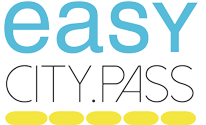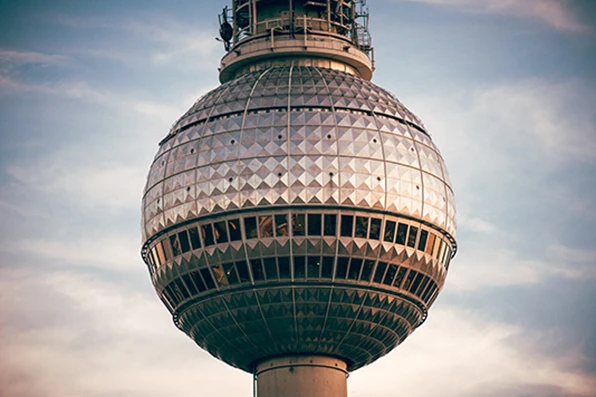 Photo: Claudio Schwarz, Unsplash
Photo: Claudio Schwarz, Unsplash
Experience Berlin: Top 13 Berlin Sights
Berlin is a vibrant metropolis rich in history, art, and culture. There is so much to discover in this fascinating city that it is hard to choose. In this article, we give you an overview of the 13 most important sights you should not miss during your visit to Berlin.
- Brandenburg Gate: The symbol of reunification and peace
- Reichstag: Seat of the German Bundestag
- TV Tower at Alexanderplatz: At 368 meters, the tallest building in Berlin
- Humboldtforum: Forum for culture, art, and science
- Holocaust Memorial: Memorial to the Murdered Jews of Europe
- Gendarmenmarkt: one of the most beautiful squares in Berlin
- Checkpoint Charlie: the most famous former border crossing in Berlin
- World Time Clock: THE meeting place for tourists and Berliners
- Kurfürstendamm: Berlin's popular shopping mile
- Charlottenburg Palace: One of the largest and most important palace complexes
- Berlin Wall: history to touch everywhere in the city
- Museum Island: an art area of a special kind
- Nikolaiviertel: Berlin's first and oldest residential area with old town flair
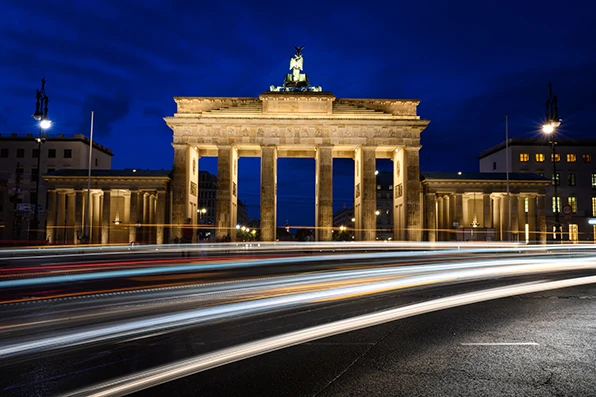 Photo: Lars Kuczynski, Unsplash
Photo: Lars Kuczynski, Unsplash
Brandenburg Gate
The Brandenburg Gate is one of the most important landmarks in Berlin. It is the only preserved city gate of Berlin, which until 1989 stood for the separation between East and West Berlin. Since the fall of the Berlin Wall, it has become a symbol of German unity. The gate is open to the public at all times.
Reichstag
The Reichstag building, or Reichstag for short, has been the seat of the German Bundestag since 1999. Not only the snail-shaped ascent into the glass dome is worthwhile. Already from the roof terrace, you have a wonderful 360-degree panoramic view over Berlin. Besides, you can learn a lot of important information about the building with the audio guide. The dome and the roof terrace of the Reichstag are open daily for visitors. The visit requires a prior appointment booking at: https://www.bundestag.de/en/visittheBundestag/dome/registration-245686
 Photo: Claudio Schwarz, Unsplash
Photo: Claudio Schwarz, Unsplash
TV Tower
The TV Tower is one of the landmarks of Berlin: built in the days of the GDR, today it is a symbol of the whole city. Anyone who is in Berlin, can not get past this building. No wonder: with a total height of 368 meters, the Berlin TV Tower on Alexanderplatz is the highest publicly accessible building in Europe. From the viewing platform at a height of about 200 meters, you have a spectacular 360-degree view of the entire city. Berlin from above at its best!
Humboldt Forum
The Humboldt Forum, directly opposite Museum Island, is surrounded by many other Berlin landmarks such as the Berlin Cathedral, Berlin TV Tower, Nikolai Quarter, and Friedrichwerder Church. A unique place of experience and encounter is being created in an area of around 30,000 square meters. Definitely a place with a special history, for culture and science, and a place that connects differences. Outstanding collections and a varied program of exhibitions, events, and digital offerings encourage every visitor to think about the world of yesterday, today, and tomorrow.
Holocaust Memorial
The Memorial to the Murdered Jews of Europe, or Holocaust Memorial for short, is located in the historic center of Berlin and commemorates the approximately six million Jews who were murdered under the rule of Hitler and the National Socialists. It was designed by Peter Eisenman, consists of 2711 cuboid concrete stelae, stands on an area of around 19,000 square meters south of the Brandenburg Gate, and is open to the public.
Gendarmenmarkt
For many, the Gendarmenmarkt is the most beautiful square in Berlin. If it is not, as it is currently, a single construction site. Three monumental buildings frame the square in Berlin-Mitte: the German Cathedral, the French Cathedral, and the Concert House. Every phase of Berlin's eventful history has left its architectural mark here.
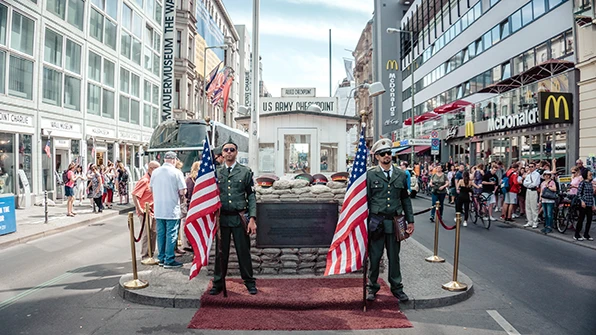 Photo: Y K, Unsplash
Photo: Y K, Unsplash
Checkpoint Charlie
Checkpoint Charlie was once the most famous border crossing between East and West Berlin. Today, a museum recalls the history of the site and the dramatic events that took place there. On August 13, 2000, a faithful replica of the first control barracks was unveiled. The stacked sandbags are filled with concrete instead of sand. On Zimmerstrasse, as in other parts of Berlin-Mitte, a double row of paving stones commemorates the course of the Berlin Wall.
World Time Clock
THE meeting place at Alexanderplatz is the World Time Clock. This has already been since its installation at the end of the 1960s. The well-known clock installation was inaugurated shortly before the 20th anniversary of the GDR in 1969 when the TV tower was also opened.
Kurfürstendamm
Kurfürstendamm, also known as Ku'damm for short, is a 3.5 km long main shopping street in Berlin's Charlottenburg-Wilmersdorf district. It runs from Rathenauplatz in the Grunewald district to Breitscheidplatz with the Kaiser Wilhelm Memorial Church. Ku'damm is characterized by trade and gastronomy and is considered one of the tourist attractions in the former center of Berlin's West.
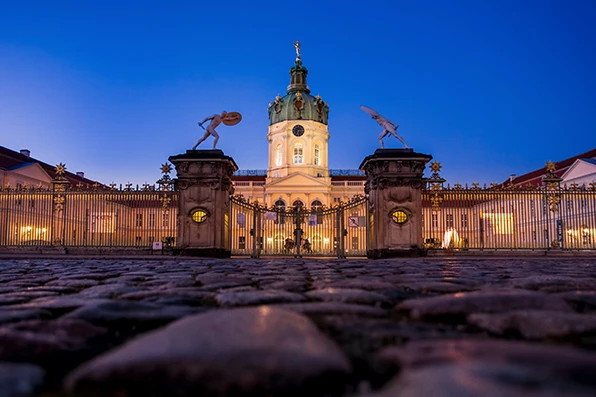 Photo: David K., Unsplash
Photo: David K., Unsplash
Charlottenburg Palace
Charlottenburg Palace is the largest and most important palace complex of the former Brandenburg electors, Prussian kings, and German emperors in Berlin. Largely restored and furnished after severe destruction during World War II, the former summer residence is one of Berlin's most important sights. Rooms furnished true to the original, impressive suites of rooms and top-class art collections, the porcelain cabinet, the palace chapel, and Frederick I's bedroom are among the highlights of the Old Palace.
Berlin Wall
The Berlin Wall was once the symbol of the Cold War. Now it is a memorial to the unity of Germany. The remains of the Wall can still be seen along the former border strip. The Berlin Wall Memorial shows what life was like along the border strip with a view of the Wall. From the observation tower on Bernauer Strasse, you can see the death strip and get a feel for the distances that had to be overcome. As a visitor to Berlin, you can't miss the East Side Gallery. The 1.3-kilometer-long remains of the Berlin Wall were painted by various artists after the fall of the Wall - turning the former gray dividing wall into the longest open-air gallery in the world.
Museum Island
The Museum Island was added to the UNESCO World Heritage List in 1999. It consists of five museums: Altes Museum, Neues Museum, Alte Nationalgalerie, Bode Museum, and Pergamon Museum. In 2019, the James Simon Gallery opened as a new visitor center. The northern part of Spree Island is dominated by the Berlin Cathedral on the Lustgarten and the Humboldt Forum.
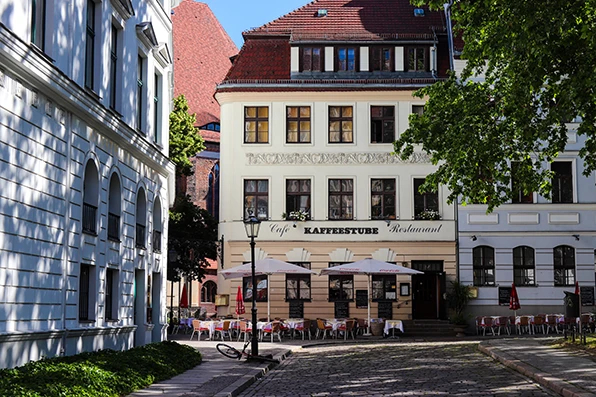 Photo: Marie Bellando Mitjans, Unsplash
Photo: Marie Bellando Mitjans, Unsplash
Nikolaiviertel
Small houses, narrow streets: if you want to discover old Berlin, you should definitely take a look around the Nikolaiviertel. The Nikolaiviertel in Mitte, between the Red City Hall and the Humboldt Forum, is an important part of Berlin's urban history and the oldest residential area in Berlin. Almost completely destroyed during World War II, it was rebuilt between 1980 - 1987 to celebrate Berlin's 750th anniversary. Around the Nikolaikirche, an ensemble of historic townhouses and prefabricated buildings was created on an almost medieval ground plan.
Well, did you feel like experiencing the best sights in Berlin? From historic buildings to modern works of art, there really is everything to see here. You can also discover exciting places off the beaten track. If you need more tips for your Berlin trip, feel free to check out our other blogposts. See you in Berlin!
